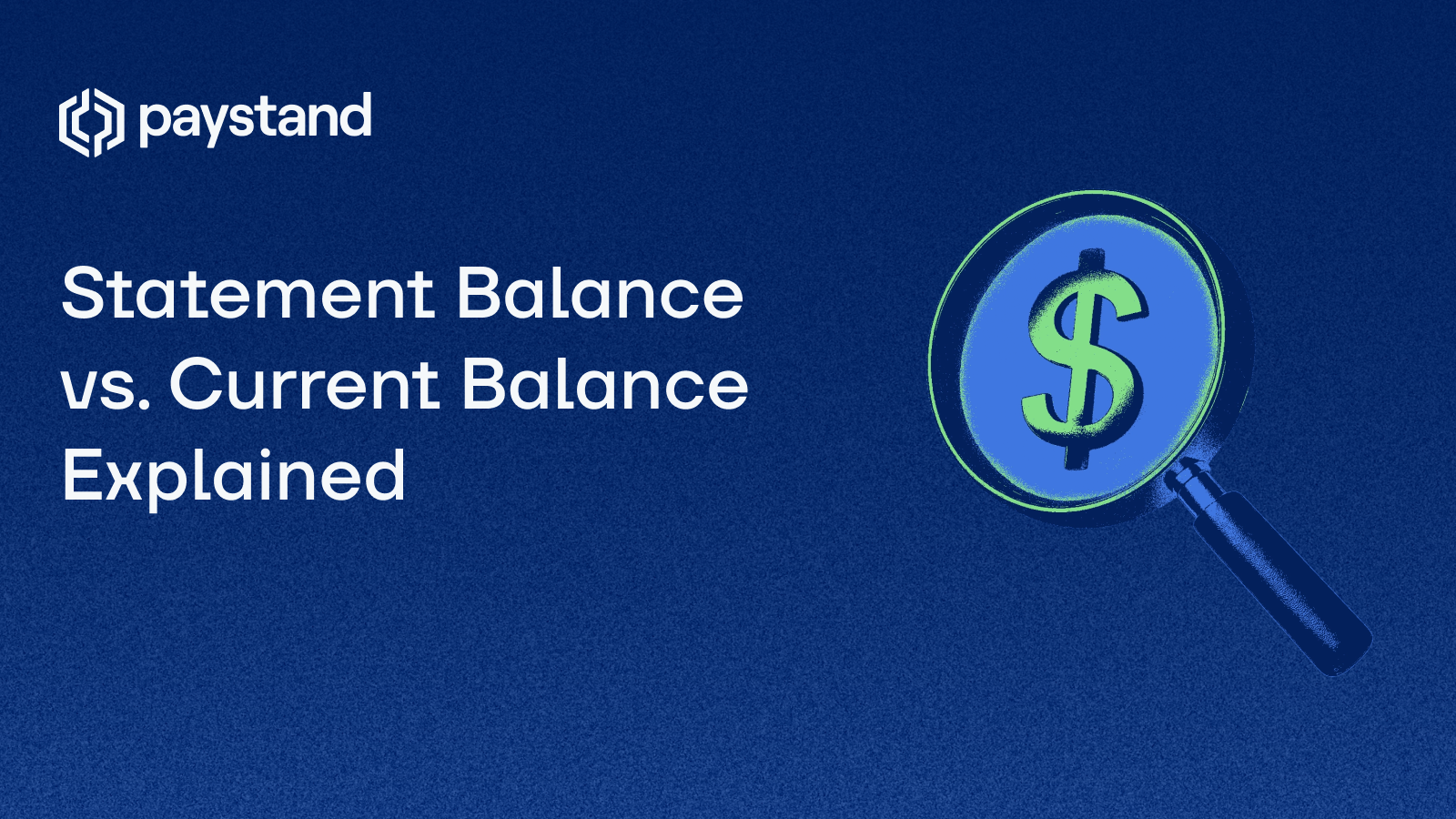Statement Balance vs. Current Balance Explained

Table of Contents
- What Is a Statement Balance?
- What Is a Current Balance?
- Statement Balance vs. Current Balance
- Does Paying the Statement Balance Avoid Interest?
- Credit-Card Balances and Your Credit Score
- Tips to Keep Balances Low
- Accounting Impacts: Trial Balance, Ledgers, and Statements
Key Takeaways
- Your credit card statement balance is locked at the statement close of each billing cycle; your current balance updates in real time.
- Paying the statement balance in full by the due date usually means you avoid interest charges thanks to the card’s grace period.
- Carrying any part of that balance forward causes you to accrue interest on all unpaid purchases, and can hurt credit-utilization ratios that affect your credit score.
- Considering credit limits, minimum payments, and issuer rules can help you avoid fees while protecting your cash flow.
- Accurate balance tracking also streamlines month-end tasks like bank reconciliation and bank-reconciliation automation, ensuring clean ledgers and reliable financial reporting.
What Is a Statement Balance?
Your statement balance (sometimes called the closing balance) is the total amount you owed on your credit card account at the moment the issuer closed the most recent billing cycle. It includes every purchase, fee, credit, and payment that posted during that period and will appear on your credit card bill. Because the number is frozen at the statement close, it stays the same until the next bill is generated.
What Is a Current Balance?
Your current balance—often listed as balance or current balance in your online portal—is a live figure that moves whenever you:
- Make a purchase
- Receive a refund
- Incur a fee or interest charge
- Submit a payment (even a micropayment)
As a result, the current balance can be higher or lower than the statement balance on any given day.
Statement Balance vs. Current Balance
| Statement Balance | Current Balance | |
|---|---|---|
| Calculated | Once per cycle, at statement close | Continuously, after every account activity |
| Purpose | The amount you must pay off by the due date to keep the grace period | Real-time picture of total outstanding debt |
| Changes After Close | No | Yes |
| Credit Score Impact | Reported to bureaus; influences utilization ratios | Not generally reported, but affects internal utilization |
| Avoid Interest? | Pay the statement balance in full to avoid interest | Optional extra payments can lower utilization further |
Knowing which balance you’re looking at helps you plan repayments strategically—pay the statement balance to stop interest, then knock down the current balance mid-cycle to free up credit limits.
Does Paying the Statement Balance Avoid Interest?
Almost always, yes. When you pay off your statement balance (even one dollar short won’t do) by the card’s due date, you keep the grace period for new purchases and avoid interest charges entirely.
If any part of the statement balance rolls over, the credit card issuer will generally:
- Charge interest on the balances on your credit carried forward, and
- Start interest on new purchases from the transaction date until the balance is brought to $0 at a future statement close.
Credit-Card Balances and Your Credit Score
Credit-scoring models look closely at utilization, the share of your total credit limits currently in use. High utilization—usually above 30%—can negatively affect your credit score. Paying down the current balance before the next statement closes lowers the utilization figure reported to bureaus and protects your score.
Tips to Keep Balances Low
- Automate at least two payments per cycle. Cover the statement balance by the due date, then issue a second payment before the next closing date.
- Set balance and due-date alerts. Most credit cards and budgeting apps can ping you when you near a limit or a deadline.
- Redeem rewards toward the balance. Cashback or statement credits directly shave down what you owe.
- Review charges often. Spot fraudulent or erroneous transactions early so the issuer can remove them before interest accrues.
- Sync with accounting software. Tools that feed card activity into your ERP speed bank reconciliation and improve accuracy.
Accounting Impacts: Trial Balance, Ledgers, and Statements
Keeping credit-card data tidy isn’t just good for interest savings—it’s critical for clean books:
- A precise card feed simplifies your trial balance at month-end
- Distinguishing card sub-accounts from the general ledger improves audit trails
- Timely reconciliations ensure accurate financial statements, giving stakeholders confidence in reported cash positions
- Automating this flow with Paystand’s bank-reconciliation automation eliminates manual data entry and speeds closing cycles
Understanding statement balance vs. current balance—and how each affects fees, pay interest exposure, and credit—empowers you to run smarter, cheaper, and cleaner credit card accounts.
Ready for next-level visibility? Explore Paystand’s finance-automation tools to reconcile faster, reduce risk, and keep every dollar working harder in our Smarter Spend Guide.







%20(1)%20(1).jpg?width=100&height=100&name=IMG_3752%20(1)%20(1)%20(1).jpg)